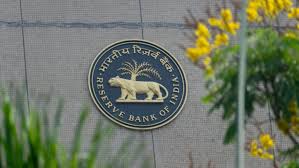New loan originations growth slows to 5% in Q4 FY25: Cibil

In a significant development reflecting growing caution in India’s retail credit market, new loan originations slowed to just 5% year-on-year in Q4 of FY25, according to the latest Credit Market Indicator (CMI) report released by TransUnion CIBIL. This is a stark contrast to the 12% growth recorded in the same quarter last year and marks the slowest pace in over two years.
The report paints a nuanced picture of the lending ecosystem, suggesting both regulatory pressures and shifting borrower behavior are contributing to the cooling off in what was once a fast-growing credit landscape. Most notably, young borrowers and unsecured loan segments like credit cards and personal loans have seen sharp deceleration.
Young Borrowers Retreat as Risk Appetite Shrinks
One of the most striking findings from the report is the decline in lending activity among younger consumers. Borrowers under the age of 35, traditionally viewed as growth drivers in the unsecured credit space, have reduced their participation in the credit market. The share of new-to-credit (NTC) borrowers fell by 3 percentage points compared to Q4 FY24.
Additionally, credit inquiries from this demographic dropped from 58% last year to 56% this year, signaling reduced interest in taking on fresh debt. Experts suggest this trend could be linked to both economic uncertainty and more conservative financial behavior among younger Indians.
Credit Cards and Personal Loans Hit the Brakes
Among all credit products, credit cards have taken the hardest hit. The report shows a 32% decline in new credit card originations—a significant reversal for a segment that had witnessed explosive growth in the post-COVID recovery period.
Similarly, personal loan originations grew by just 6%, down from 13% in Q4 FY24. Analysts attribute this slowdown to multiple factors:
- The RBI’s tighter regulatory stance on unsecured personal loans and credit cards.
- Stricter underwriting norms by banks and NBFCs.
- Growing concerns over consumer leverage and repayment capacity.
This cautious approach appears to be a deliberate move by lenders to de-risk their loan books, especially amid macroeconomic headwinds and a potential rise in delinquencies.
High-Value Secured Loans Remain Resilient
While the unsecured credit market has slowed down, secured, high-ticket loans have shown resilience. The report highlights that home loans exceeding ₹1 crore witnessed a 9% year-on-year growth, while two-wheeler loans above ₹1.5 lakh rose by 7%.
These figures suggest that creditworthy, high-income borrowers are still active in the market, particularly in segments where asset backing provides lenders with more security. Banks and housing finance companies have seemingly shifted their focus toward this segment to maintain growth while managing risk.
Asset Quality Improves Even as Growth Slows
Despite the overall slowdown in loan originations, the credit market’s health has improved. The CIBIL report shows a decline in delinquencies across most product categories, including credit cards. The share of overdue balances (90+ days past due) fell, indicating more disciplined borrower behavior or effective collection mechanisms.
This improvement in credit performance may also explain why lenders are comfortable expanding in the secured loan space, even as they pull back from riskier portfolios.
The Role of RBI and Monetary Policy
It’s worth noting that the RBI had cut the repo rate by 25 basis points in February 2025, bringing it to 6.25%. However, this monetary easing does not appear to have revived demand as expected. The Credit Market Indicator dropped to 97, its lowest point in the last eight quarters, despite the policy rate cut.
Experts believe that interest rate cuts alone may no longer be sufficient to fuel credit expansion, especially in an environment where consumer sentiment is cautious, and regulatory guidance is leaning conservative.
Lenders Shift Strategy to Manage Risk
Faced with a combination of weak demand, cautious borrowers, and stricter norms, banks and NBFCs are now adopting more selective and strategic lending practices. According to market observers:
- There’s a visible pivot toward collateral-backed lending, especially in the mortgage and auto loan segments.
- Pre-approved and low-risk borrowers are being prioritized.
- Use of AI-based credit scoring and alternative data is increasing to better evaluate risk in uncertain market conditions.
Implications for Financial Inclusion and Market Outlook
The slowdown in lending, particularly to young and new-to-credit individuals, could pose a challenge to India’s financial inclusion goals. First-time borrowers and those in the informal sector often rely on small-ticket, unsecured loans to build credit histories. A continued pullback in this space could widen the gap between low-income borrowers and access to formal credit.
That said, the long-term fundamentals of the Indian credit market remain strong. The country still has a largely underpenetrated credit base, and as confidence returns, lenders are likely to gradually expand their offerings. However, the near-term outlook suggests a more cautious, quality-over-quantity approach.
Conclusion
The Q4 FY25 slowdown in new loan originations, as reported by CIBIL, is a clear signal that India’s credit market is entering a phase of recalibration. While the growth engine has decelerated, improved asset quality and a strategic shift toward secured lending suggest that this may be a healthy correction rather than a downturn.
With evolving borrower behavior, tighter regulation, and a recalibrated risk appetite, lenders are preparing for a more sustainable credit cycle—one that balances growth with prudence. How quickly demand revives will depend not just on interest rates, but also on broader economic conditions and consumer confidence in the coming quarters.






